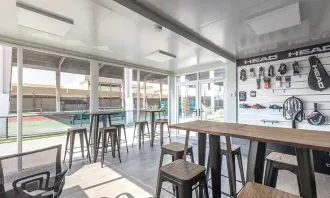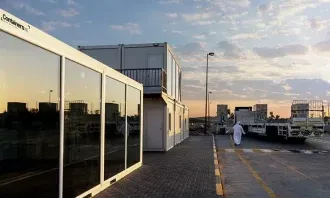A Comprehensive guide to container ventilation systems

Ventilation is crucial in transforming a container into a livable, functional space. While all containers come with windows to facilitate air circulation, they are often insufficient for efficient temperature control. To select the best ventilation system for your container, it’s important to consider how the container will be used and what modifications are feasible. Here are several ventilation systems commonly used in container structures.
At Containers ME, every container is delivered with proper ventilation, ensuring client satisfaction for over nine years. Our containers, made using German technology, stand out in terms of quality, durability, and efficiency.
Why Ventilation Matters in Container Homes

Proper ventilation is essential for creating a healthy and comfortable living space in a container. Here’s why it matters:
Health and Well- being: Effective ventilation improves indoor air quality by removing pollutants, reducing the risk of health issues.
Energy Efficiency and Comfort: Good ventilation maintains fresh air, preventing odors and helping regulate temperature and humidity. This reduces the need for excessive heating or cooling, thus lowering energy consumption.
Climate Control and Ventilation for Container Living Spaces

Maintaining proper temperature and airflow is critical for creating a secure and comfortable environment. Climate control systems prevent containers from becoming too hot in summer or too cold in winter. Here are key solutions:
Active Vents: These are mechanical systems powered by electricity that remove stale air, moisture, and odors, making them ideal for containers used in industrial settings or as living spaces.
Insulation: Insulation, such as spray foam or batts, helps maintain indoor temperature. For extreme climates, additional layers of insulation may be needed on all six sides of the container.
Air Conditioning: A well-installed air conditioning system ensures comfort by controlling both temperature and humidity, reducing the risk of mold and creating a livable space comparable to a traditional home.
Ventilation for Container Bathrooms

Bathrooms in container homes require additional ventilation to manage moisture and odors effectively. Key solutions include:
Active Vents: Similar to home bathroom exhaust fans, active vents remove excess moisture and odors. Depending on the size of the bathroom, multiple vents may be required.
Passive Vents: While less effective than active vents, passive vents near showers can still help improve air circulation and reduce humidity.
Plumbing Vents: One of the often-overlooked but crucial aspects of container bathroom ventilation is the plumbing vent. These vents allow proper drainage and prevent sewer gases from entering the container, essential for maintaining a safe environment.
Effective ventilation is critical for the long-term functionality of prefab container bathrooms. By combining active, passive, and plumbing vents, you can ensure that your container bathroom remains fresh, comfortable, and safe, no matter the weather or usage conditions
Conclusion
Proper airflow is essential for creating a healthy and comfortable living space in container homes. By understanding different ventilation options and their applications, you can ensure effective temperature control and air quality. The ideal ventilation system depends on factors like the container’s intended use, location, and comfort level. At Containers ME, we provide expert advice to help you choose the right solution for your needs, ensuring your container is transformed into a comfortable and valuable space.
.






